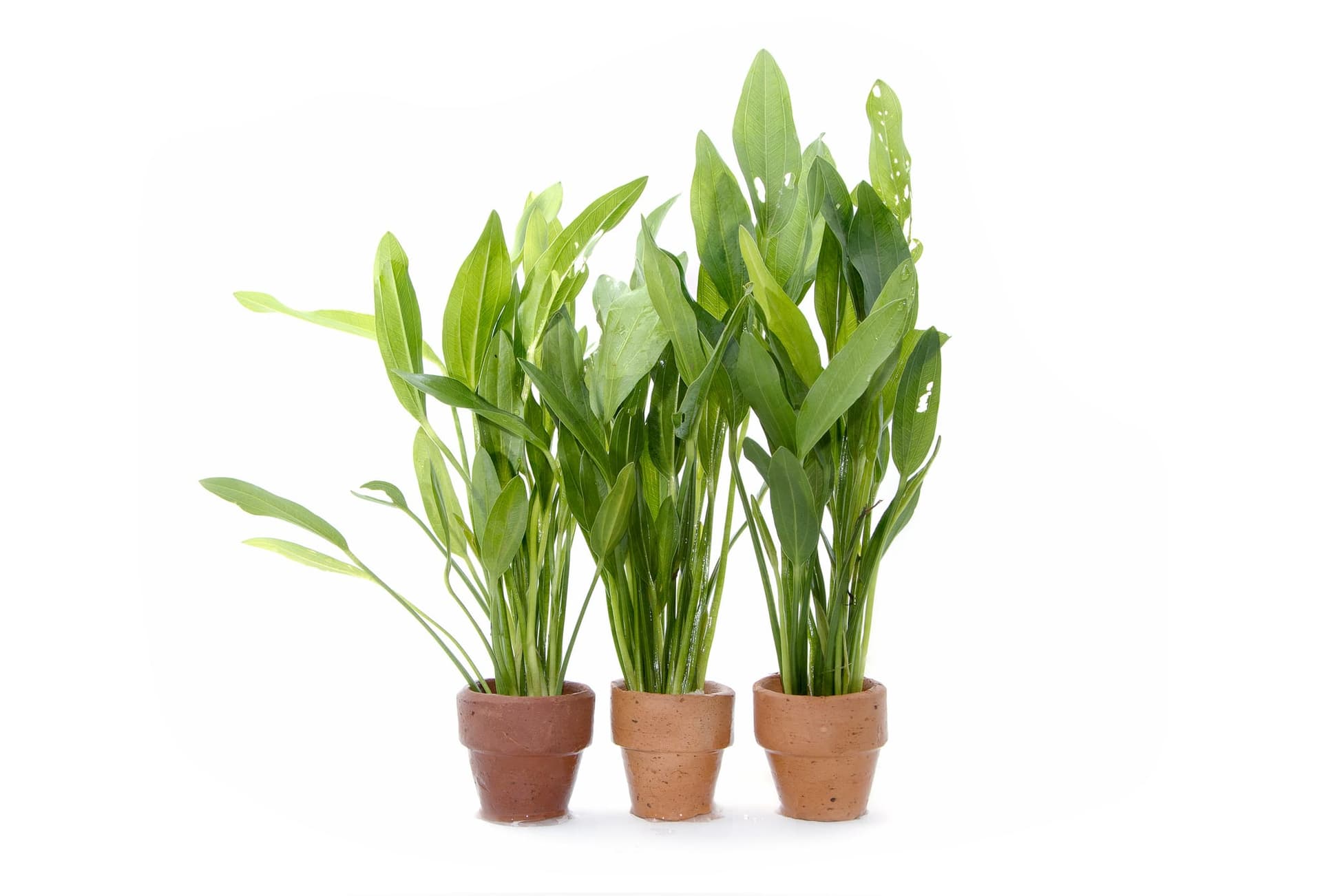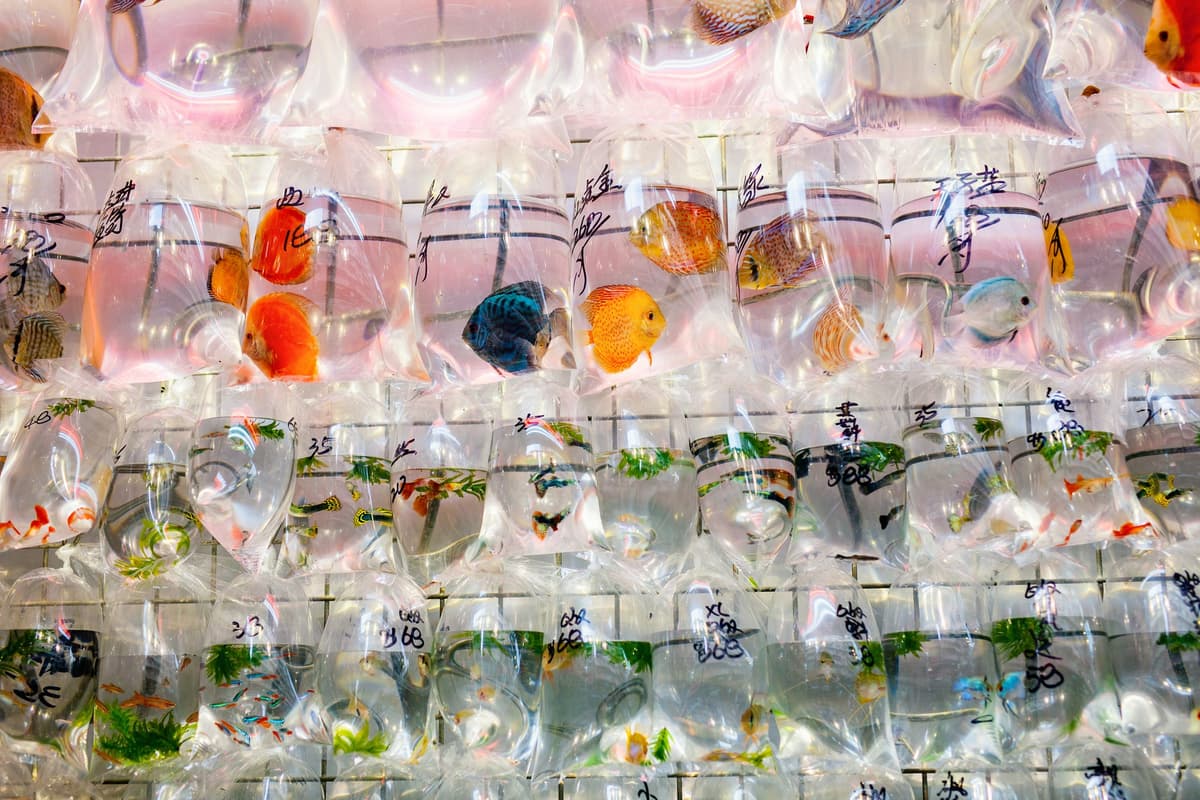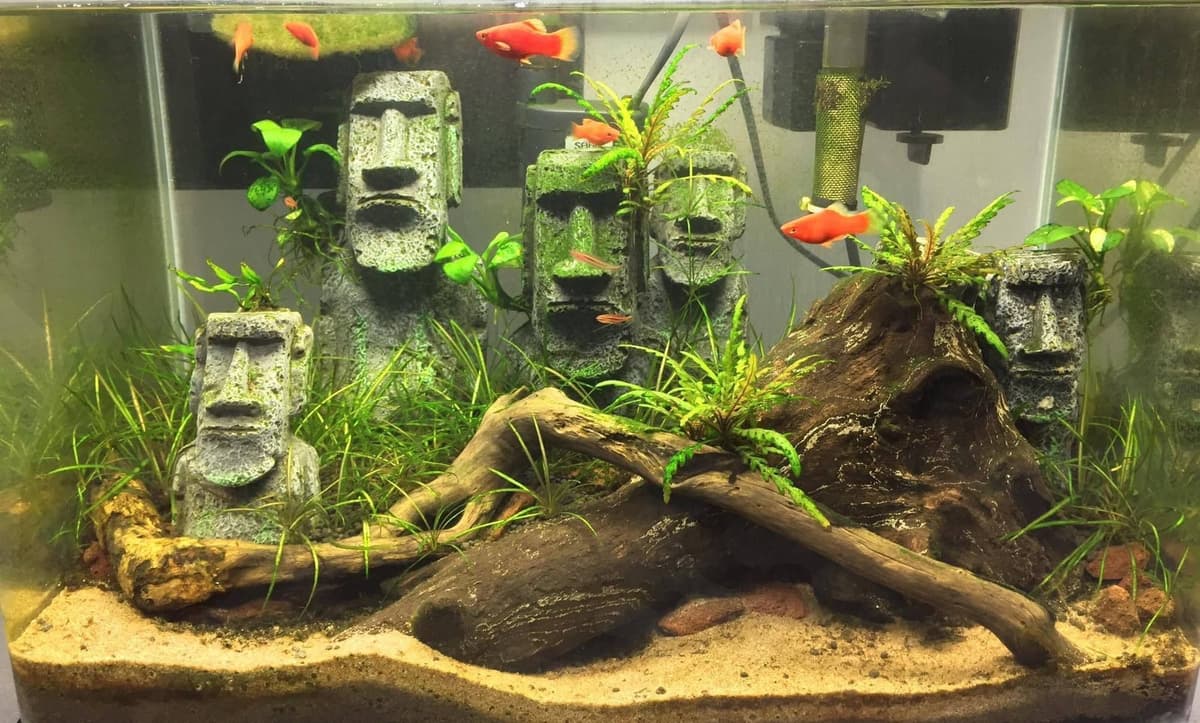Plant-filled aquariums look incredible and help absorb toxic fish waste. But for new aquarists, it’s frustrating to see green leaves turn brown or melt away. Here’s the ultimate list of 8 beginner-proof plants—including the famous Java Fern — that thrive with minimal effort and won’t break the bank.
What makes an aquarium plant beginner friendly?
This all depends on your setup and experience, we believe a beginner friendly plant has the following qualities:
1. Has low light requirements
This allows you to grow these plants in basic aquariums without forking out hundreds of dollars for the latest aquarium lights.
2. Has no CO2 Requirements
CO2 systems are often used by experienced aquarium designers to help their plants grow and look their best. This can be very fiddly to setup.
Some plants require CO2 to make any meaningful growth, these beginner plants will grow happily without any additional help.
3. Grows slowly
This might seem counterintuitive but a slow growing plant means you're not constantly getting in the aquarium to trim it back.
4. Tolerant of water conditions
No matter where you live these beginner plants should hold up fairly well. It may take your new plants a while to adapt to the water conditions from your tap but they will bounce back eventually.
Top 9 beginner plants
Here's a list of beginner plants, ranging from mosses to large background plants.
1. Marimo Moss Ball
A velvety green orb that’s technically a rare form of algae, not a true plant. These are about as easy as aquarium greenery gets. Just place them in your tank, roll them gently every water change, and avoid direct sunlight or high heat.
If they float, squeeze out trapped air. If they go brown, rinse gently and reshape.
Tip: Use several to create a lush carpet, or wrap a Marimo around driftwood for a unique look.
Buy it on Glass Aqua for $7.99
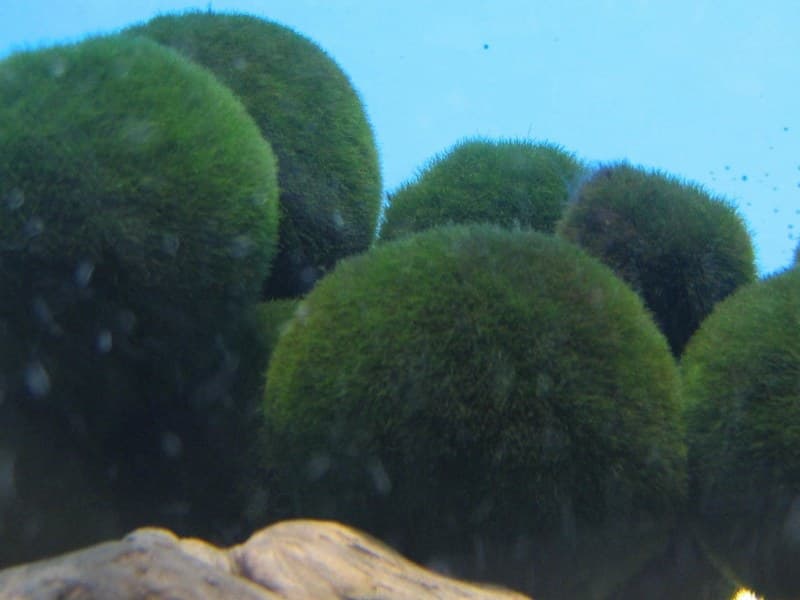
Photo by っ, CC BY-SA 4.0 via Wikimedia Commons
2. Amazon Sword
This classic background plant grows huge, lush green leaves and instantly fills a tank with greenery. Swords thrive in medium to large aquariums with a nutrient-rich substrate or regular root tabs.
When you buy it, the big round leaves may melt underwater—don’t panic! New, narrower leaves will sprout in their place.
Tip: Plant the crown above the substrate and add more root tabs if the plant looks pale.
Buy it on Glass Aqua for $7.99

3. Cryptocoryne wendtii
A slow-growing “crypt” that’s famous for surviving almost anything: low light, no CO2, and basic gravel. It prefers feeding from the roots, so use root tabs if you don’t have a planted substrate. Leaves may melt when first planted, but new ones will adapt and regrow.
Tip: Red and brown types get more colorful with extra iron.
Buy it on Glass Aqua for $9.99
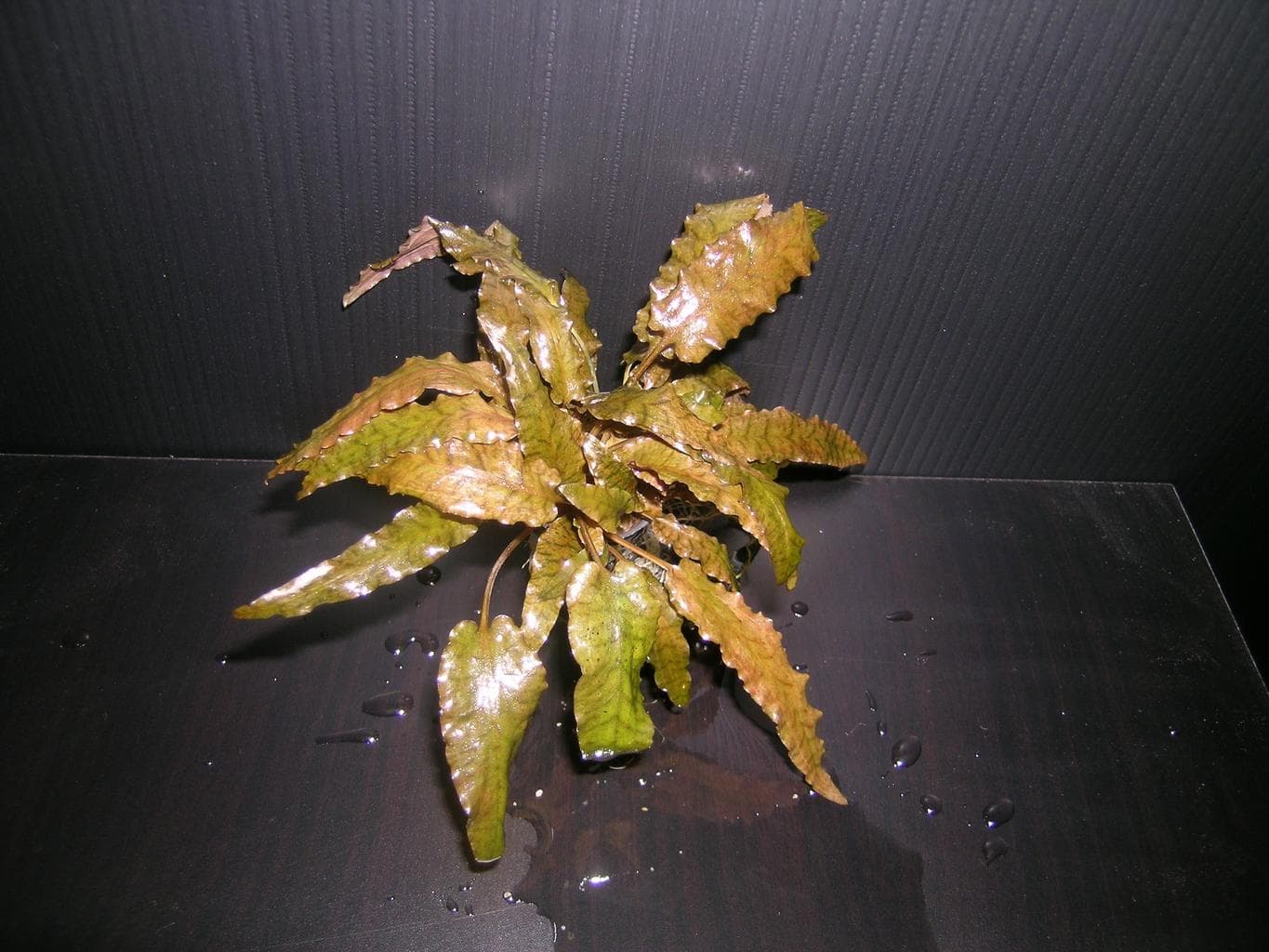
4. Aponogeton crispus
Aponogeton bulbs send up long, wavy-edged leaves that flow in the current. Simply lay the bulb on the substrate, and in days it’ll sprout leaves and roots. Occasionally, the plant goes dormant and drops its leaves—just leave the bulb in the tank and it’ll regrow.
Tip: Low-light friendly, very affordable, and sometimes even produces delicate flowers.
Buy it on Glass Aqua for $12.99

5. Bacopa caroliniana
A forgiving stem plant with round, upright leaves. Bacopa grows without CO2, and tolerates both low and moderate light. As the plant grows tall, just snip the tops and replant them to make your tank bushier. The lower stems may drop their original leaves underwater—this is normal.
Tip: High light and extra iron turn the tips a coppery red.
6. Christmas Moss
This moss creates soft, fuzzy fronds that look like mini Christmas trees and are perfect for breeding tanks or shrimp colonies. Attach it to rocks, driftwood, or decorations with thread or aquarium glue. Christmas Moss is slow-growing, so pair with Amano shrimp or snails to prevent algae buildup.
Tip: Feed sparingly with liquid fertilizer for healthy, deep green growth.
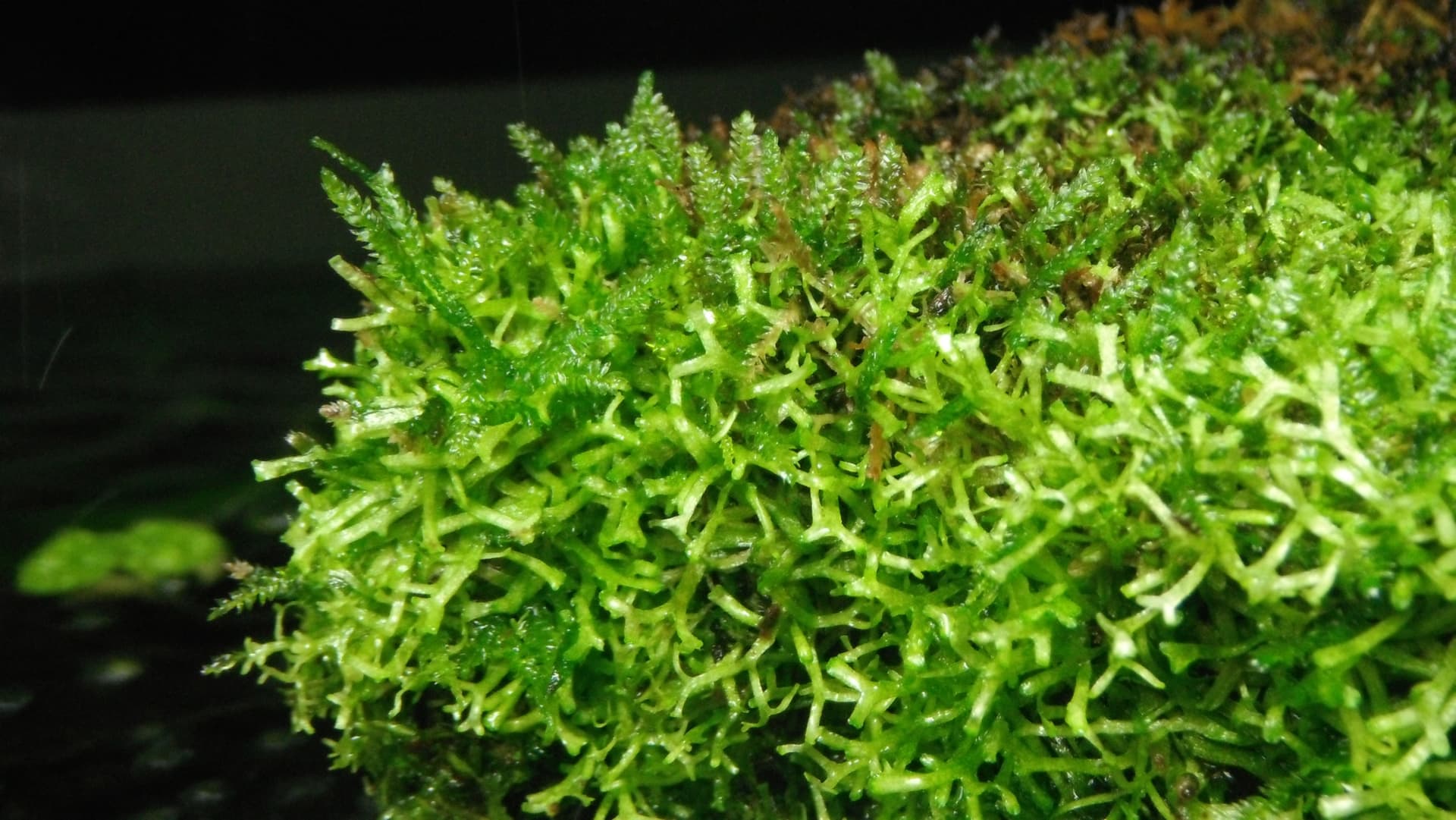
Photo by Cliff, CC BY 2.0 via Wikimedia Commons
7. Vallisneria
Vallisneria grows tall, grassy blades and quickly fills tanks by sending out new shoots. It’s famous for creating a wild, underwater jungle with minimal care. Just add root tabs and occasional liquid fertilizer for best results. Once established, it can even hold up to the digging of goldfish or cichlids.
Tip: Use as a background or to hide equipment in your tank.
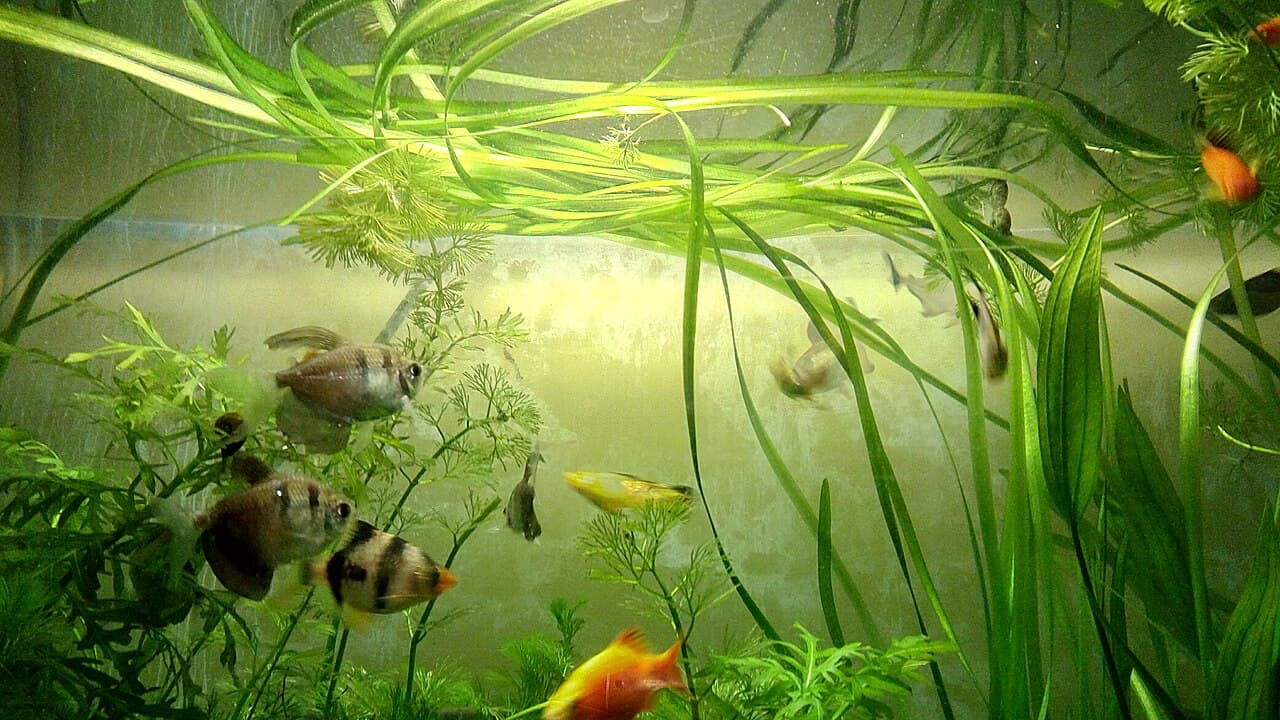
Photo by H. Zell, CC BY-SA 3.0 via Wikimedia Commons
8. Java Fern (Microsorum pteropus)
Java Fern is a must-have for beginners. It thrives when attached to driftwood, rocks, or decor—never bury the rhizome! This plant loves low to moderate light and doesn’t need CO2. It absorbs nutrients from the water, shrugs off most fish, and sends out baby ferns along its leaves which you can detach and replant.
Tip: If the leaves get black spots or start to melt, trim them back and check your lighting and nutrients.
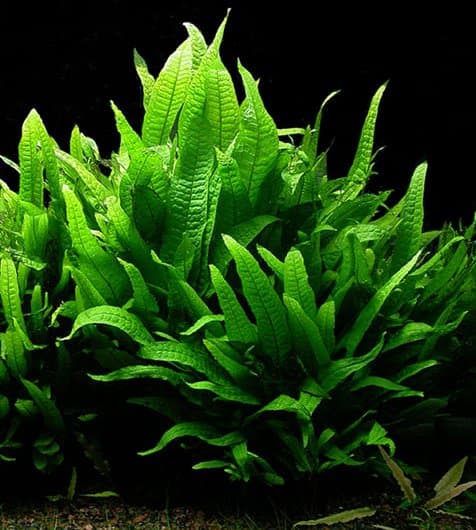
9. Anubias Nana
While it may be last on the list, Anubias Nana is one of the most widely used plants in the aquarium hobby. This plant is extremely hardy, has deep green leaves and has compact growth.
What makes it so easy to keep is it can thrive in low light and no CO2 environments. Making it the perfect plant for a beginner.
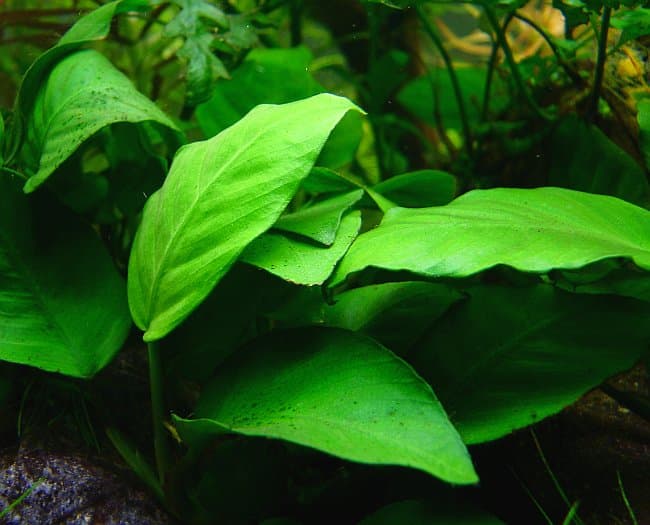
How to design your aquarium
Use MyAquariumBuilder’s visual planner to lay out your tank and map out your plant growth!
To get your creative juices flowing here is our Two Island aquarium design, which we created as part of our Aquarium Design for Beginners series.
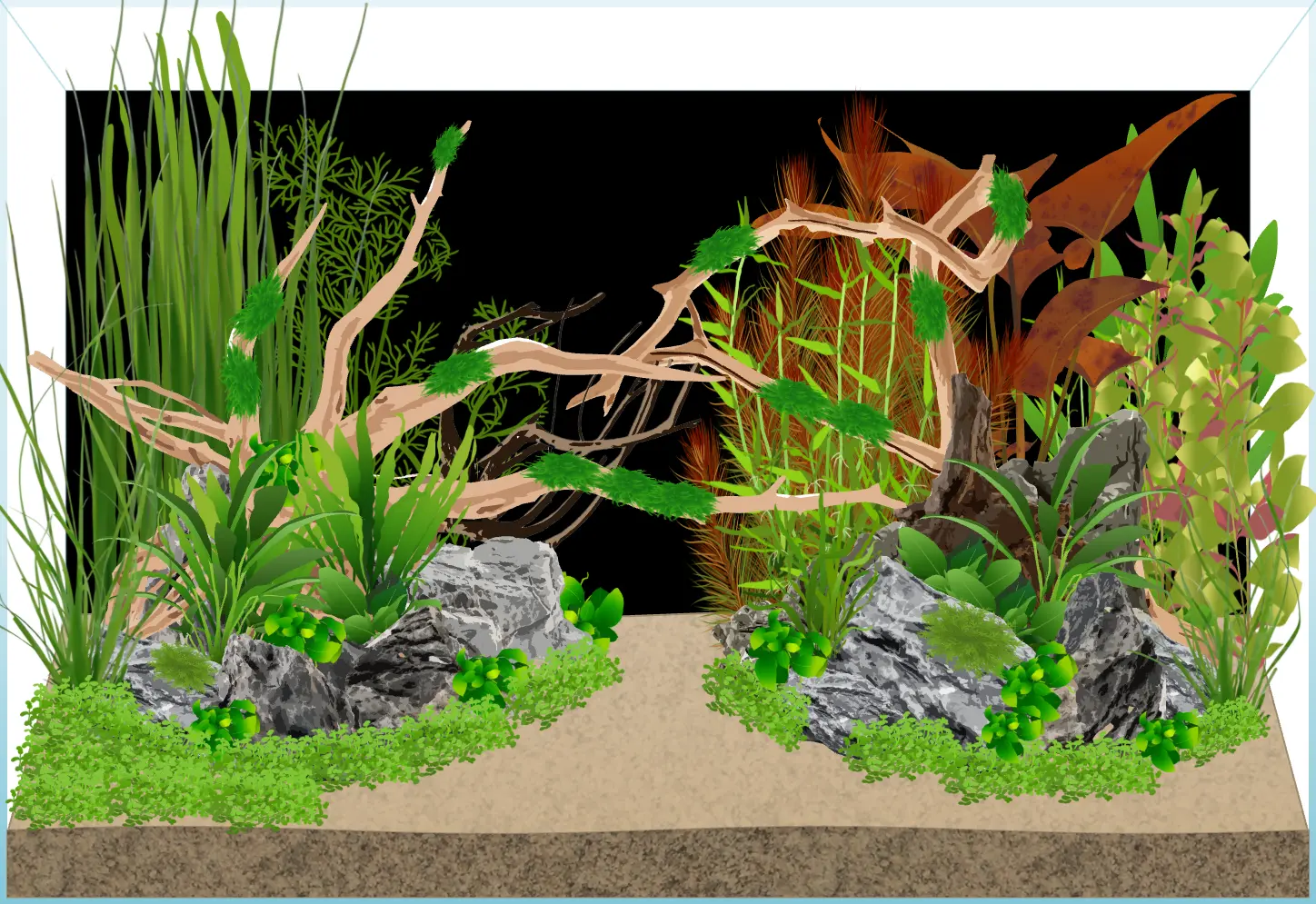
Bonus: How to Propagate These Plants
- Stem plants (Bacopa, Vallisneria): Snip healthy tops or runners and plant them where you want new growth.
- Bulb plants (Aponogeton): Leave dormant bulbs in the tank; new shoots will return.
- Mosses/Ferns: Detach baby moss clumps or Java Fern plantlets and attach to new hardscape.
Final Thoughts
These 8 plants are hard to kill, easy to find, and will keep your tank green even if you miss a water change or two. Start with these, first experiment with your aquascape using MyAquariumBuilder’s aquarium planner, and then enjoy watching your underwater jungle thrive!
